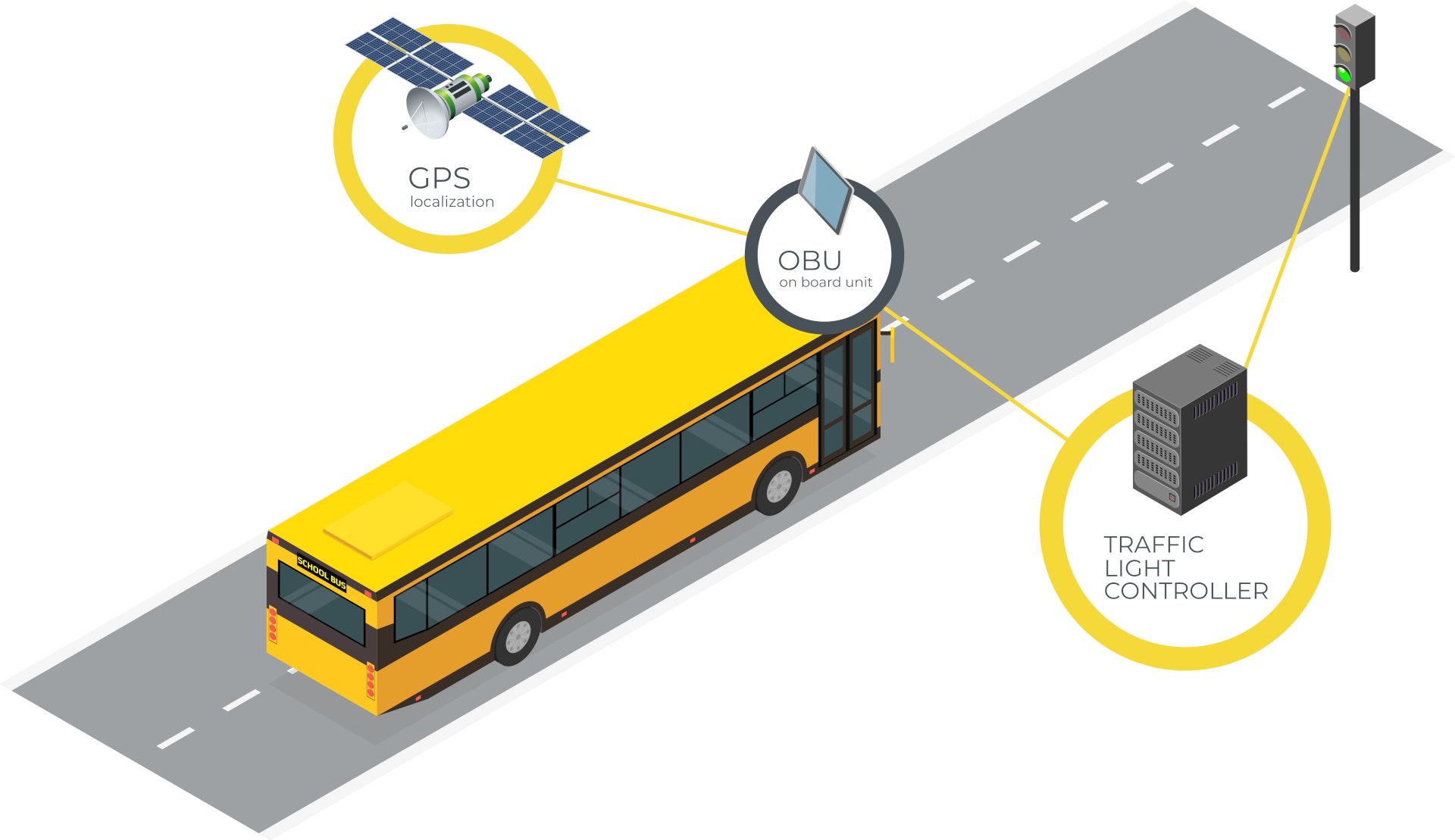C-ITS / V2X Prioritisation
Connected vehicles will not only lead to technical revolutions in the car industry. Together with developments in highly automated mobility, which is sometimes simply reduced to the term “autonomous cars”, they will change our mobility habits and thus our life.
In 2019, first connected cars shall be on the market. At the same time, many highly automated functions will be in series.
This does not happen un-coordinatedly or at random. Industry and administration cooperate in various initiatives. An important result for the infrastructure is the European strategy COM(2016) 766 on Cooperative Intelligent Transport Systems (also referred to as C-ITS Systems).
Within C-ITS, standards are introduced which support Vehicle-to-anything (V2X) communication. These include technologies for Vehicle-to-Vehicle (V2V), Vehicle-to-Infrastructure (V2I) and in future Vehicle-to-Pedestrian (V2P) communication.
Advantages
Of These New Communication Technologies
- Local
- Fast
- Highly standardized
- Device to Device – capable to work independently from any base-station presence free to air.
The Achieved
(Cooperative) Functions Contribute To ...
- Safety
- Improvement of traffic quality and throughput
- More efficiency: Less energy consumption and thus fuel savings and emission reduction
- A good experience for travelers with their means of transport
With connected vehicles and the V2X prioritisation, new functions are possible, which were infeasible with the old technologies. A small technical revolution is possible at single intersection level, where V2X communication can boost classic prioritisation schemas and at the same time the system is prepared for various new services.
The Actual Scenario
Plenty of technologies exist to achieve certain types of prioritisation – but some are getting old and need replacement.
Giving priority to public transport vehicles, to rescue and emergency services, to special VIP vehicles or heavy goods vehicles are a common need throughout Europe.
Each community / country has varying needs or existing practice – depending on the political targets and law context.
As various as the different prioritisations are the technologies used today to achieve this prioritisation. Some technologies are at risk to become outdated and require replacement solutions. Not all technologies support a modern, highly secure and highly reliable context. Some technologies are very specialised and therefore expensive. Some are not standardised and therefore vendor specific.
The fact that V2X communication technologies are driven by a worldwide automotive and telecommunication chip manufacturing industry in a broad scale delivers an unprecedented mass-technology context. Due to the originating industry's requirements and ongoing developments, a continuous state-of-the-art development is granted.
Yet the introduction of infrastructure-to-vehicle technology on a broad basis needs time and a certain pre-installation of infrastructure capabilities to allow vehicles to benefit.
Since prioritisation in most applications today involves coordinated investment in vehicles and infrastructure at the same time, this V2X use case is a good candidate to build up V2I infrastructure and achieving short-and long-term benefits immediately.
Why Do We Need
C-ITS / V2X Prioritisation?
Faster and safer response of emergency services
Equipped intersections can reduce the congestion spillback which hinders emergency vehicles to proceed fast.
Additionally, intersections can stop conflicting traffic streams by red light, thus giving more safety to both the emergency vehicle driver and the conflicting traffic participant, who clearly gets a red light and thus is not at risk while passing on green but having the duty to give way to an approaching blue-light vehicle.
Better service quality for public transport
Public transport vehicles are recognised by the intersection. Through an adapted control program, unnecessary stops and delays are avoided, since a green is granted to the public transport vehicles.
Saving energy and reduce
pollution
If there is capacity and capability, decisions on when to switch green or red can take into account heavy vehicles. E.g. small adjustments to avoid a last-seconds-stop of such vehicles (trams, trucks, …) saves energy
Example: Smart Public Transport Priority

Get your free demo
SWARCO has proven to be a reliable partner for governments around the world, resulting in a rapidly growing number of successful projects in different regions. Request your free demo and let us help you improve traffic in your city with V2X Prioritisation
